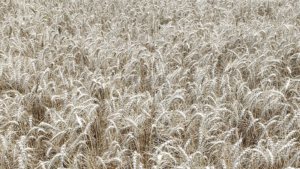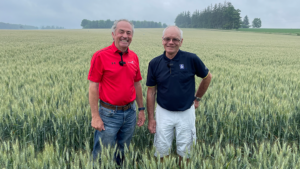Equipment readiness roundup
REMEMBER TO CHECK DIGITAL AND ANALOGUE COMPONENTS

FALL HARVEST IS imminent — but is your equipment ready to go?
If you have not already done so, now might be a good time to take a closer look at both the digital systems and analogue parts of harvest equipment.
REVIEWING THE COMBINE
Combines are, for obvious reasons, front and centre during harvest. Featuring a slew of moving parts, breakdowns in any one place can cause delays, if not damage, to other parts of the machine.
Speaking in the summer of 2022, Jim Franceschetti, parts and service product marketing manager for harvesting, hay, forage, and crop harvesting at CNH Industrial, encourages operators to start with cleaning and maintenance fundamentals. Afterwards, he suggests focusing on all parts of the threshing process. The feeder house, chains, sprockets — the constant movement and vibration of these parts necessitates extra attention.
“If you do notice something, make a note. That way, you have a list of things when you go to your dealer,” he says. Franceschetti later adds parts supplies have generally recovered from the shortages experienced in recent years and should be more easily accessible.
CALIBRATE MORE THAN ONCE
Calibration is also critical as crops and conditions change from year to year. Franceschetti says assuming the same fan speeds, threshing and rotor speeds, and other component settings will work optimally without adjustment from the previous season is not ideal.
Yield monitors can be another challenging piece. If not calibrated properly, the information they generate can be messy and less than useful. This applies to both pre-installed proprietary monitors, as well as aftermarket systems.
The aftermarket system FarmTRX, for example, measures volumetric flow rather than grain mass — or, more specifically, the height of the grain on each paddle in the grain column. Calibration for different crops moving on different-sized grain paddles, the thickness of which varies between different makes and models, is required.
For Peter Gredig, a London-area grain farmer and technology consultant, checking whether yield monitor settings are working as you harvest other crops is also important. Different corn hybrids, for example, may have different test weights, which throw off the previously accurate monitor.
“You have to be aware of anomalies too, like if you’re going up a hill as opposed to down a hill. The data can be skewed,” Gredig says. “Look for fliers and odd patterns. It’s not a ‘do it once, and it’s good for the rest of harvest’ type of thing.”
ARE DIGITAL PARTS PROTECTED?
There are plenty of other electronic toys on modern machines as well.
Whether the combine, tractor or otherwise, most digital systems include more and less-vulnerable components. Franceschetti says equipment designs usually include covers and other protection for more vulnerable components. Checking for damage is still a good idea, as is refraining from potentially damaging actions like power washing areas that should not be exposed to excessive moisture.
“These machines are so complicated. You don’t want to necessarily just assume you know what you’re doing. You want to make sure you’re not doing more harm than good,” Franceschetti says. If unsure about the design or the best way to clean, both the manual and dealer contacts can provide expertise.
FIRE PREVENTION
Combine fires are always a concern. The comparative abundance of electrical components does not itself have much impact on fire risk. As with bearings and other potential analogue sources of heat, however, being diligent around the buildup of crop residues and other debris on wires and other electrical parts is a best practice.
“You should also have the right safety equipment,” says Franceschetti, specifically citing the importance of a working fire extinguisher.
“We want to encourage these operators to think outside the box a bit… Even just calling their dealer to talk about things, think of every different scenario. The more time and prep you do now, the less risk and downtime.” •

























